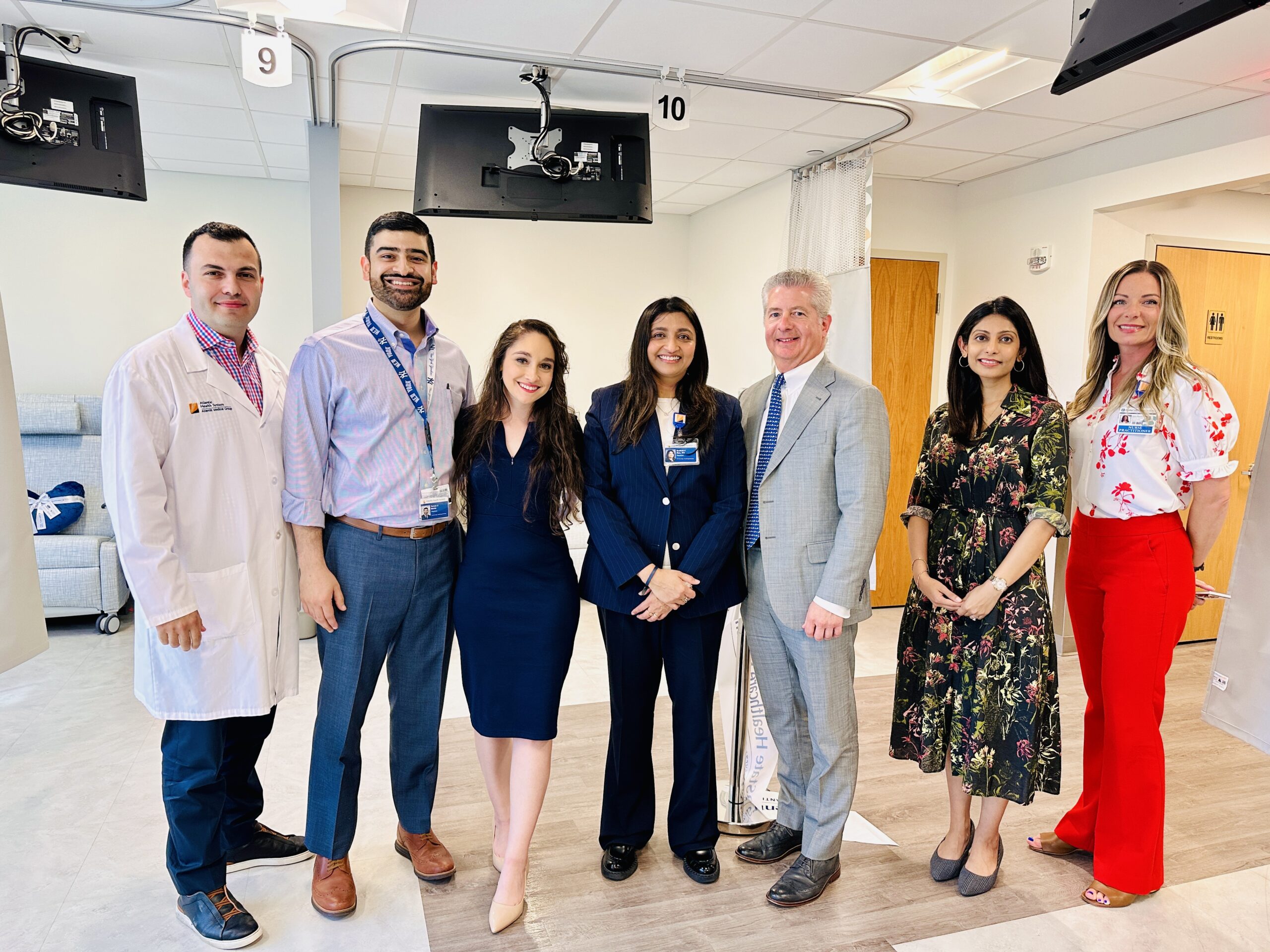Report on Healthcare Innovation and its Alignment with Sustainable Development Goals
Case Study: Outro Health and Antidepressant Tapering
An investigation into the telehealth startup Outro Health reveals significant intersections with several United Nations Sustainable Development Goals (SDGs). The company’s focus on assisting patients in tapering off antidepressant medications provides a critical lens through which to examine modern healthcare challenges and innovations.
SDG 3: Good Health and Well-being
The core mission of Outro Health directly addresses targets within SDG 3 by focusing on mental health and well-being. The initiative seeks to mitigate a specific health challenge associated with selective serotonin reuptake inhibitors (SSRIs).
- Addressing Treatment Side Effects: The service aims to prevent debilitating side effects from antidepressant discontinuation, directly contributing to patient well-being.
- Customized Patient Care: By pairing patients with clinicians for personalized tapering schedules, the model promotes a more precise and humane approach to mental healthcare management.
- Innovative Pharmaceutical Access: The partnership with compounding pharmacies to create custom, low-dose medications not commercially available represents a novel method for improving treatment outcomes and patient safety.
- Telehealth Expansion: The use of a telehealth platform expands access to specialized mental health services, a key component of achieving universal health coverage as outlined in SDG 3.
SDG 9: Industry, Innovation, and Infrastructure
Outro Health exemplifies the principles of SDG 9 by introducing innovation within the healthcare industry and leveraging modern infrastructure to deliver its services.
- Disruptive Business Model: The company employs a direct-to-consumer subscription model, reflecting a broader trend of technological disruption in traditional service sectors.
- Scientific Foundation: The service is based on academic research into antidepressant tapering, demonstrating a commitment to science-fueled innovation. Co-founder Mark Horowitz’s involvement underscores the link between academic research and commercial application.
- Rethinking Prescription Processes: The focus on “deprescribing” represents an innovative reform of standard prescription practices, challenging the industry to develop better protocols for medication cessation.
SDG 10: Reduced Inequalities & SDG 12: Responsible Consumption
The operational model and market positioning of the startup raise important considerations regarding equitable access and responsible medical practices.
- Concerns of Access Inequality (SDG 10): With service availability limited to seven states, there is a clear disparity in access, highlighting the challenge of ensuring that innovative health solutions do not widen existing inequalities.
- Promoting Responsible Consumption (SDG 12): By facilitating a safe reduction in medication use, the service promotes a more responsible consumption pattern for pharmaceuticals, countering potential over-reliance on prescription drugs.
- Nuanced Public Messaging: There is a critical need to balance the narrative to avoid the stigmatization of necessary psychiatric medications, which could disproportionately harm vulnerable populations and deepen health inequalities.
SDG 16: Peace, Justice, and Strong Institutions
Journalistic Accountability in Health Innovation
The reporting process on Outro Health serves as a model for the journalistic vigilance required to ensure new entities in the healthcare space are accountable and transparent, contributing to the development of strong institutions.
- Maintain Professional Skepticism: The initial approach to the story was one of skepticism, questioning the provocative “Uber for getting off antidepressants” framing. This critical stance is essential when evaluating new ventures.
- Consult Independent Sources: Reporting involved seeking out academic experts on tapering who had no affiliation with the startup, ensuring an unbiased and comprehensive assessment.
- Engage in Nuanced Reporting: The final story aimed to capture the complexity of the service, acknowledging its potential benefits while situating it within the broader context of direct-to-consumer prescription startups and their systemic implications.
- Foster Informed Public Discourse: Despite initial misinterpretations based on the headline, the article ultimately provoked a more nuanced public conversation about mental healthcare, demonstrating the media’s role in shaping responsible public discourse.
Analysis of Sustainable Development Goals in the Article
1. Which SDGs are addressed or connected to the issues highlighted in the article?
-
SDG 3: Good Health and Well-being
This is the most prominent SDG in the article. The entire discussion revolves around mental health, specifically the challenges of tapering off antidepressant medications. The startup, Outro Health, provides a service aimed at improving the well-being of patients by helping them manage their medication withdrawal safely, which directly aligns with promoting health and well-being.
-
SDG 9: Industry, Innovation, and Infrastructure
The article focuses on a “startup company” called Outro Health, which represents innovation in the healthcare industry. It describes a new business model that uses telehealth technology (“direct-to-consumer prescription services”) and collaboration with specialized compounding pharmacies. This highlights the role of innovation and technology in creating new solutions for health challenges, which is a core aspect of SDG 9.
2. What specific targets under those SDGs can be identified based on the article’s content?
-
SDG 3: Good Health and Well-being
-
Target 3.4: “By 2030, reduce by one-third premature mortality from non-communicable diseases through prevention and treatment and promote mental health and well-being.”
Explanation: The article directly addresses the promotion of mental health and well-being. Outro Health’s service is a form of treatment management designed to help patients who “want to get off the medications” without “experiencing debilitating side effects.” This is a clear effort to improve the quality of life and well-being for individuals managing their mental health conditions. -
Target 3.8: “Achieve universal health coverage, including financial risk protection, access to quality essential health-care services and access to safe, effective, quality and affordable essential medicines and vaccines for all.”
Explanation: The article touches on access to specialized healthcare services. Outro Health uses a telehealth model to connect patients with clinicians, expanding access to care. However, the article notes the service is only “available in seven states,” highlighting a gap in universal coverage. It also addresses access to medicines by working with “compounding pharmacies that produce custom versions of generic antidepressants in small doses not available commercially,” which is a method to provide effective and customized medication.
-
Target 3.4: “By 2030, reduce by one-third premature mortality from non-communicable diseases through prevention and treatment and promote mental health and well-being.”
-
SDG 9: Industry, Innovation, and Infrastructure
-
Target 9.5: “Enhance scientific research, upgrade the technological capabilities of industrial sectors… encouraging innovation…”
Explanation: The article describes Outro Health as a startup fueled by science, noting that “Mark Horowitz, the academic psychiatrist behind the science fueling this startup,” has done “high-profile academic research into tapering.” The company’s model is an innovation in the healthcare sector, using telehealth platforms and a “subscription service model” to deliver a new type of medical service. This is a direct example of private sector innovation based on scientific research.
-
Target 9.5: “Enhance scientific research, upgrade the technological capabilities of industrial sectors… encouraging innovation…”
3. Are there any indicators mentioned or implied in the article that can be used to measure progress towards the identified targets?
-
For Target 3.4 (Promote mental health and well-being):
-
Implied Indicator: Availability of specialized mental health services.
Evidence: The article states that the service is “available in seven states,” which is a quantifiable measure of the geographic availability of this specific mental health support service. -
Implied Indicator: Patient outcomes in medication management.
Evidence: The company’s core mission is to “help patients taper off antidepressant medications without experiencing debilitating side effects.” Measuring the rate of successful tapering without such side effects would be a direct indicator of progress.
-
Implied Indicator: Availability of specialized mental health services.
-
For Target 3.8 (Achieve universal health coverage):
-
Implied Indicator: Proportion of the population covered by essential health services.
Evidence: The limited availability (“in seven states”) implies that a large portion of the population does not have access to this service, which can be used as a proxy for measuring coverage gaps in specialized telehealth. -
Implied Indicator: Availability of customized and affordable medicines.
Evidence: The mention of using “compounding pharmacies that produce custom versions of generic antidepressants” points to an indicator related to the availability of non-standard, affordable medication formulations required for effective treatment.
-
Implied Indicator: Proportion of the population covered by essential health services.
-
For Target 9.5 (Enhance scientific research and innovation):
-
Implied Indicator: Number of innovative enterprises in the health sector.
Evidence: The article is centered on “the startup company Outro Health,” which serves as a case study. Tracking the emergence of such health-tech startups is an indicator of innovation. -
Implied Indicator: Adoption of technology in service delivery.
Evidence: The article highlights the use of telehealth, describing the service as part of a “movement toward direct-to-consumer prescription services.” The growth of this model is an indicator of technological adoption in healthcare.
-
Implied Indicator: Number of innovative enterprises in the health sector.
4. Summary Table of SDGs, Targets, and Indicators
| SDGs | Targets | Indicators Identified in the Article (Implied) |
|---|---|---|
| SDG 3: Good Health and Well-being |
3.4: Promote mental health and well-being.
3.8: Achieve universal health coverage and access to quality essential health-care services and medicines. |
– Geographic availability of specialized mental health services (e.g., “available in seven states”). – Rate of successful patient tapering from antidepressants without side effects. – Coverage of essential health services (highlighted by the limited access to the service). – Availability of custom-formulated, affordable generic medicines. |
| SDG 9: Industry, Innovation, and Infrastructure | 9.5: Enhance scientific research and encourage innovation. |
– Number of new health-tech startups based on scientific research (e.g., Outro Health). – Rate of adoption of telehealth and direct-to-consumer models in healthcare. |
Source: healthjournalism.org







